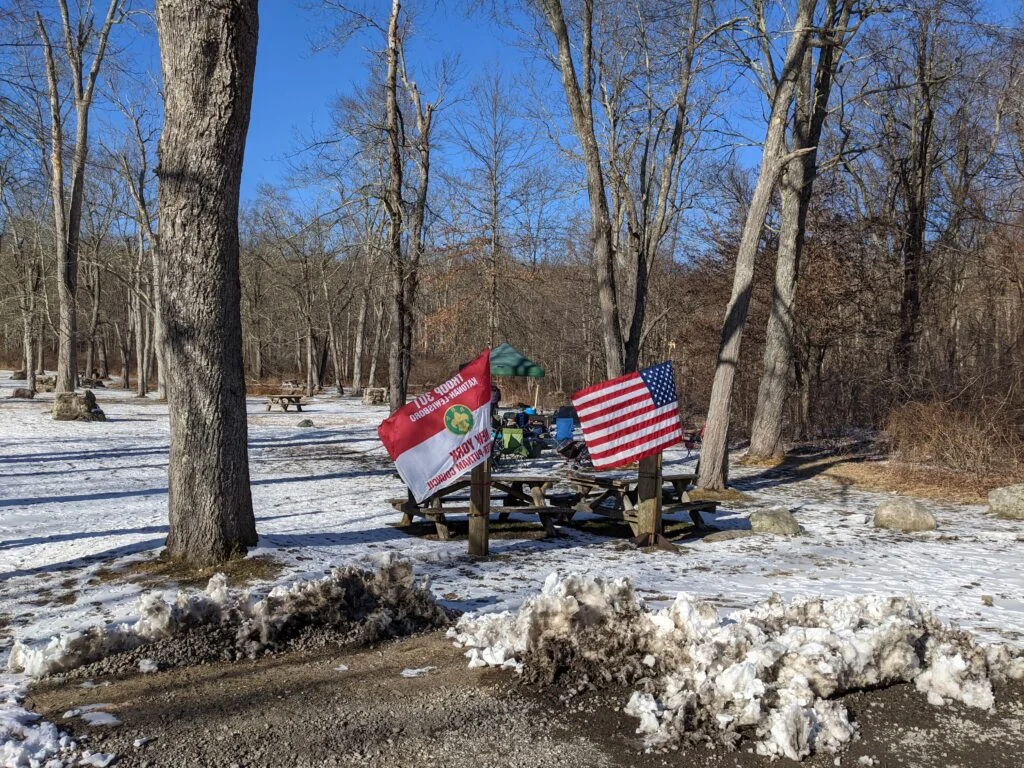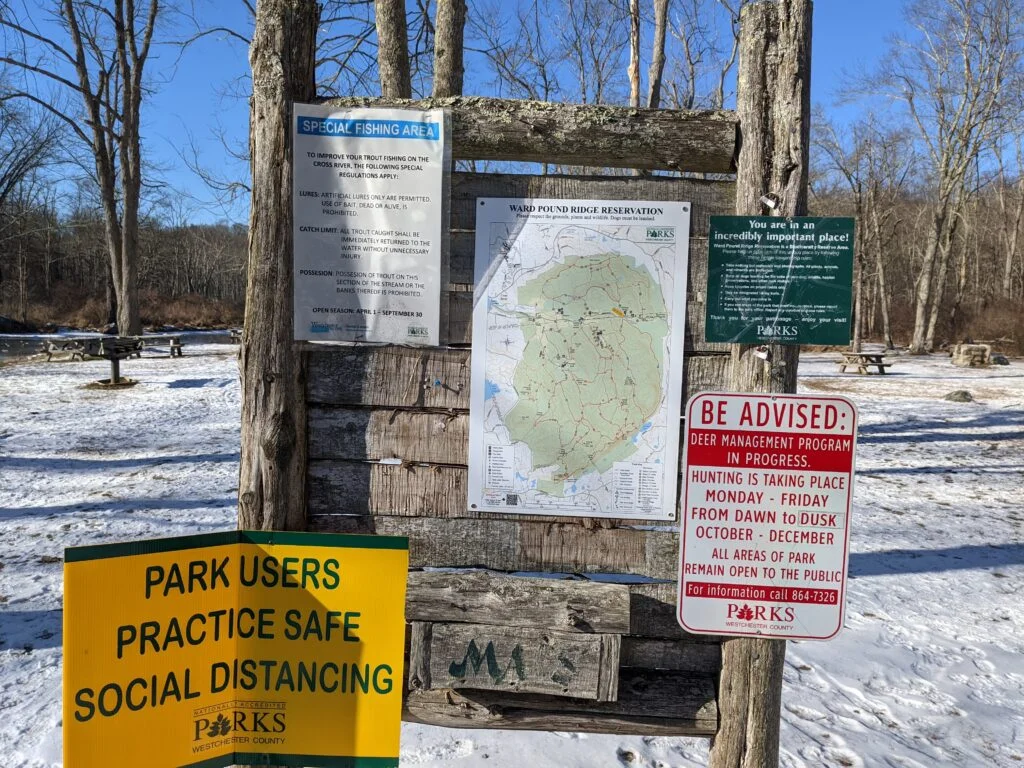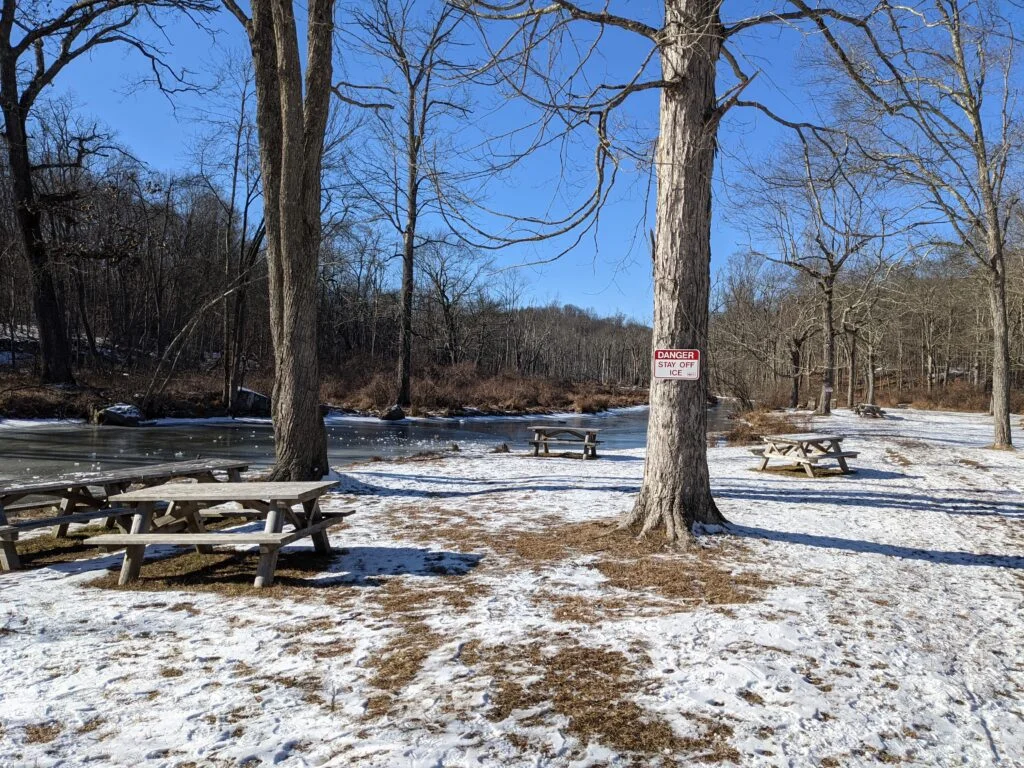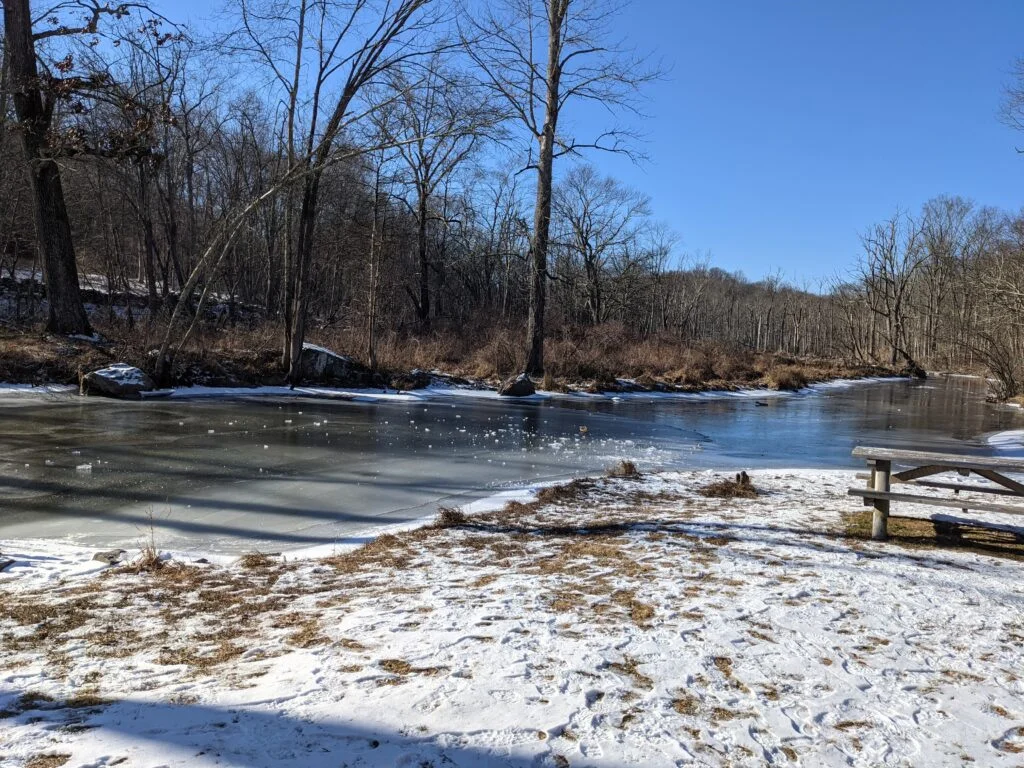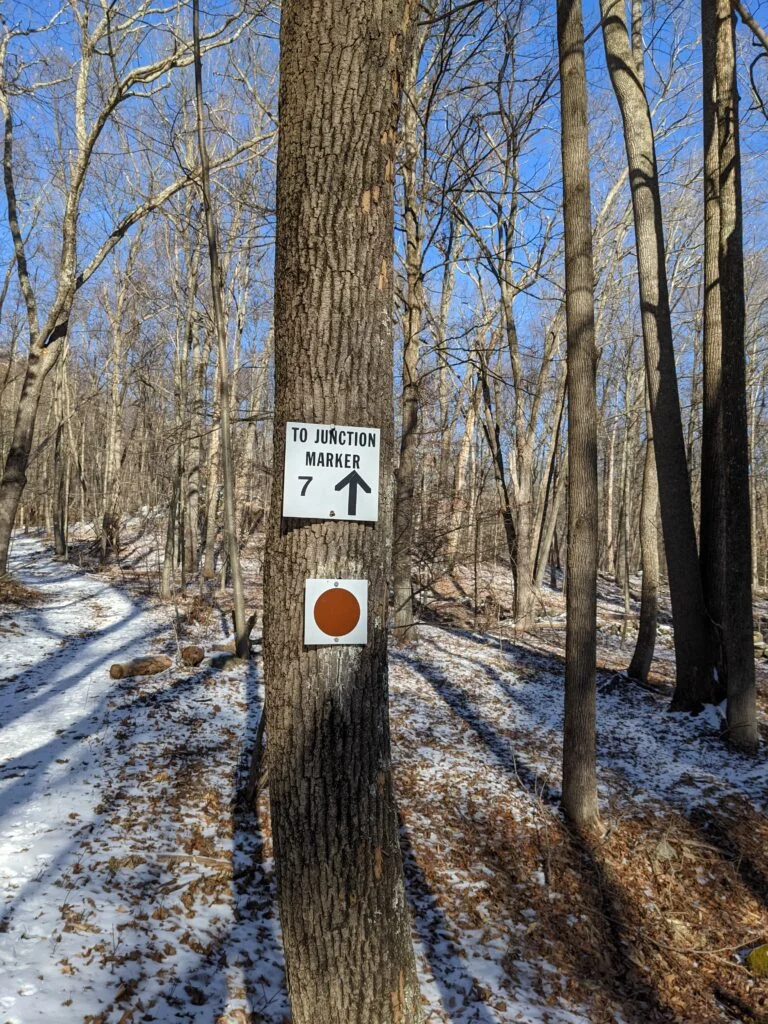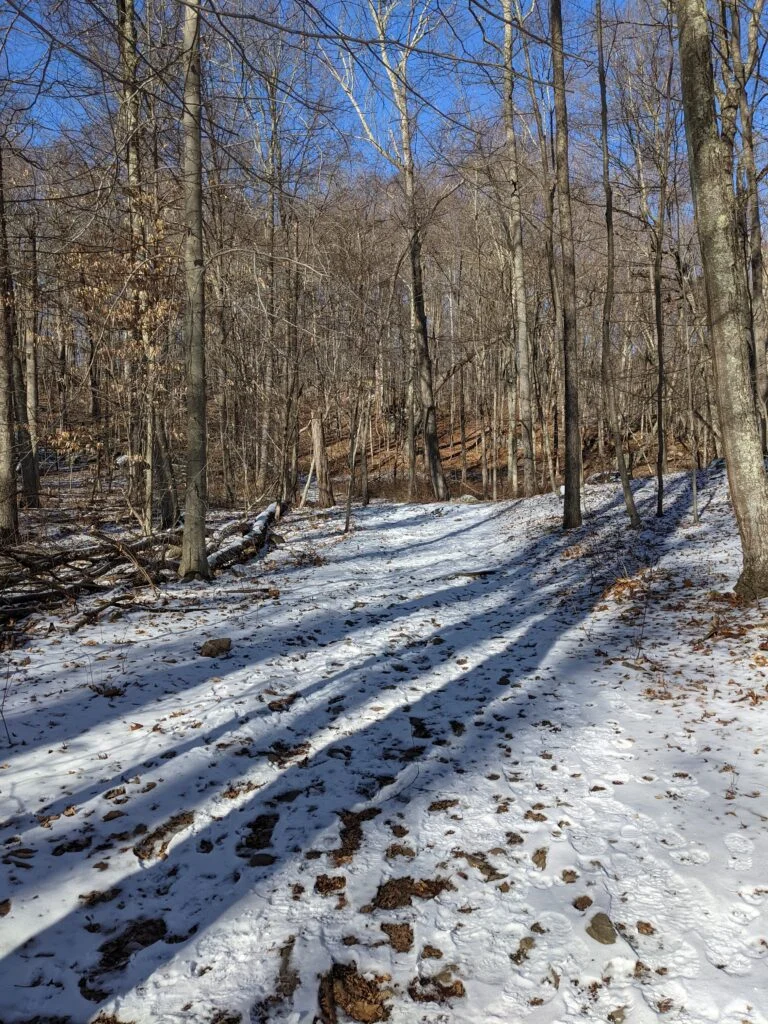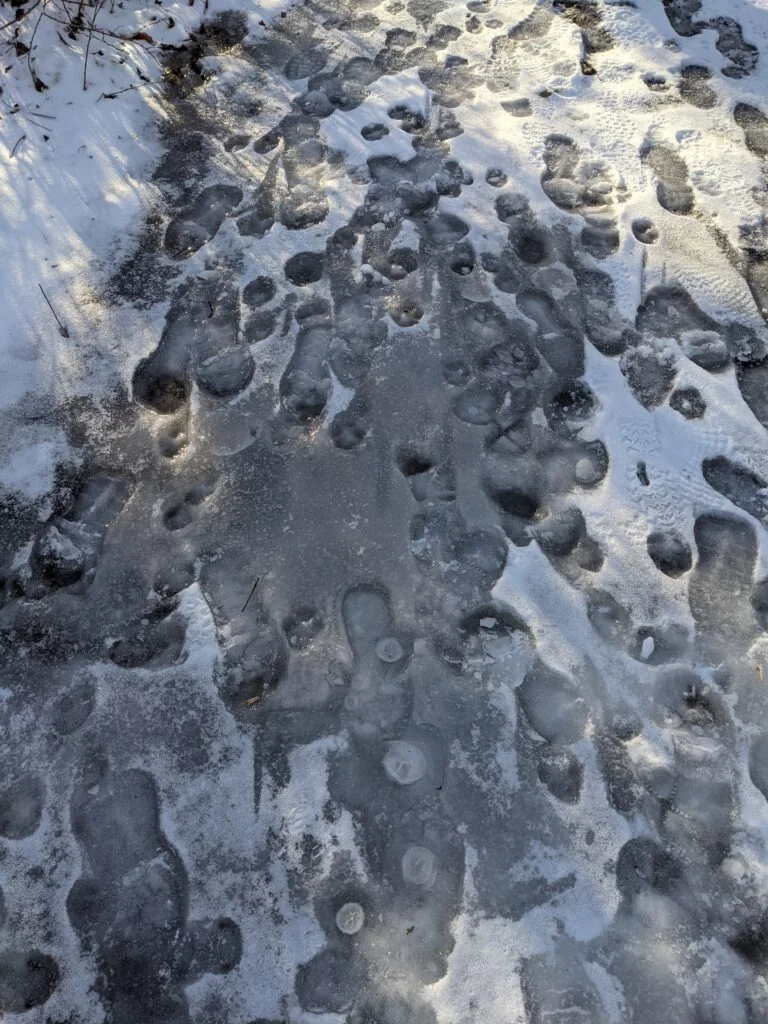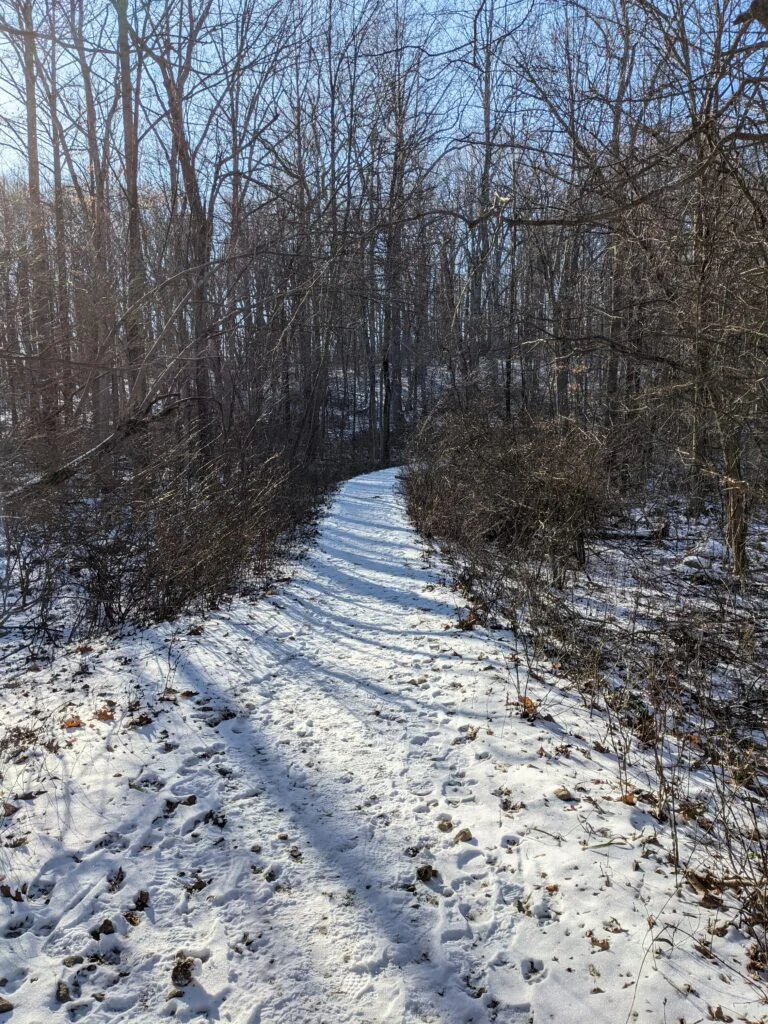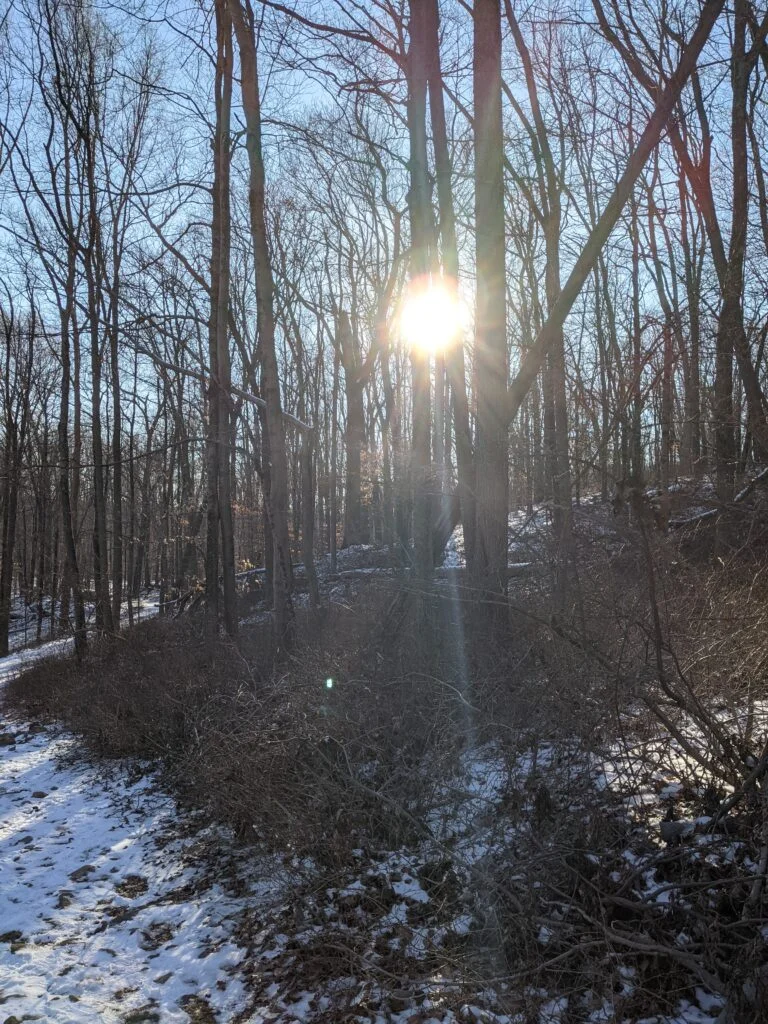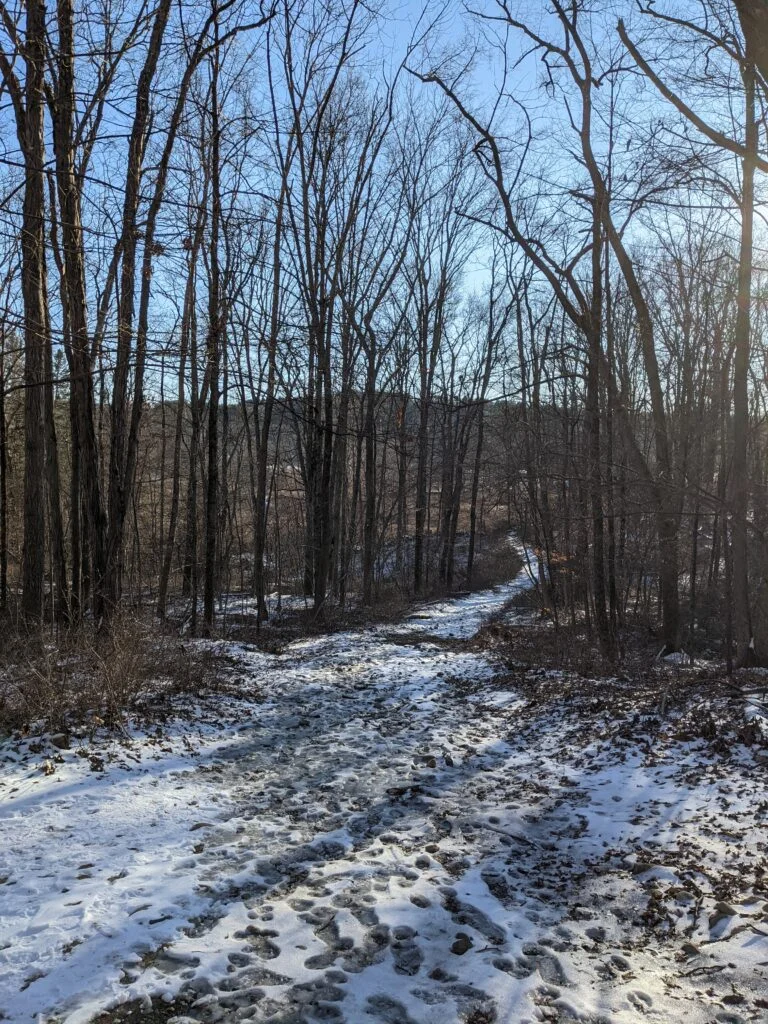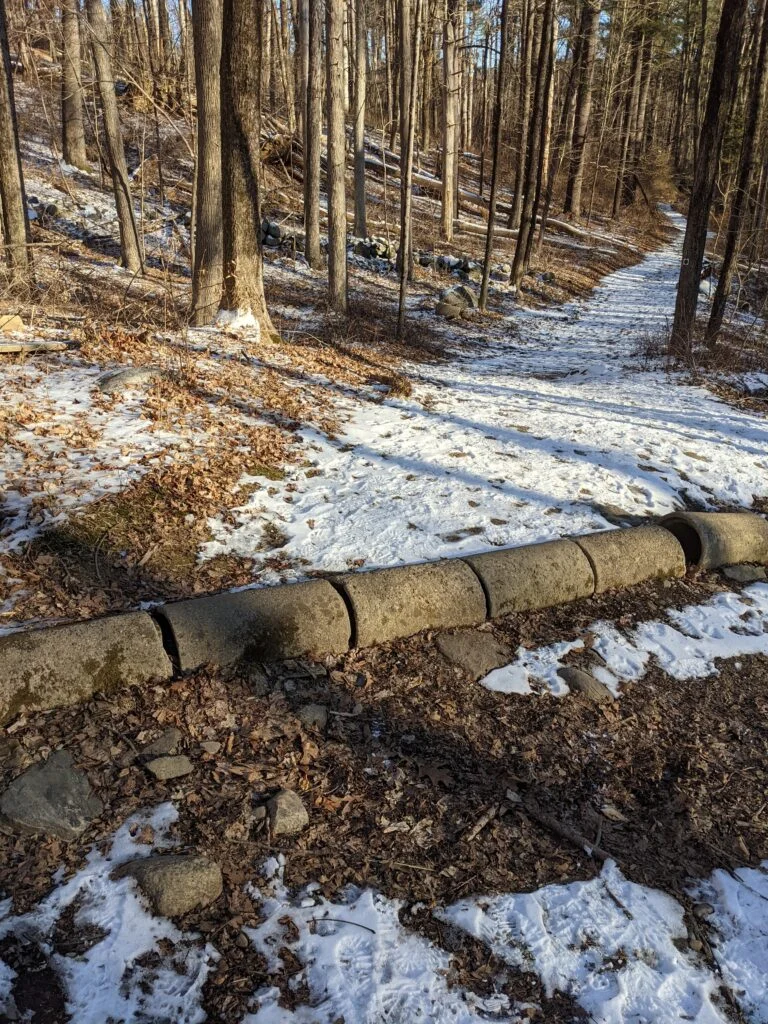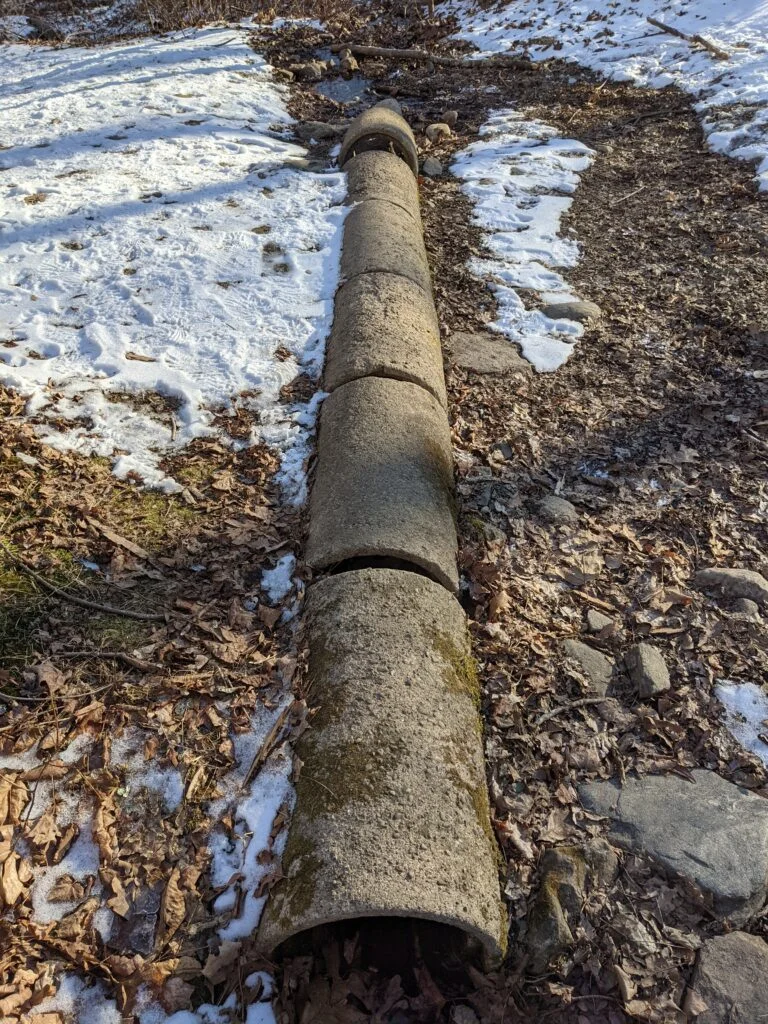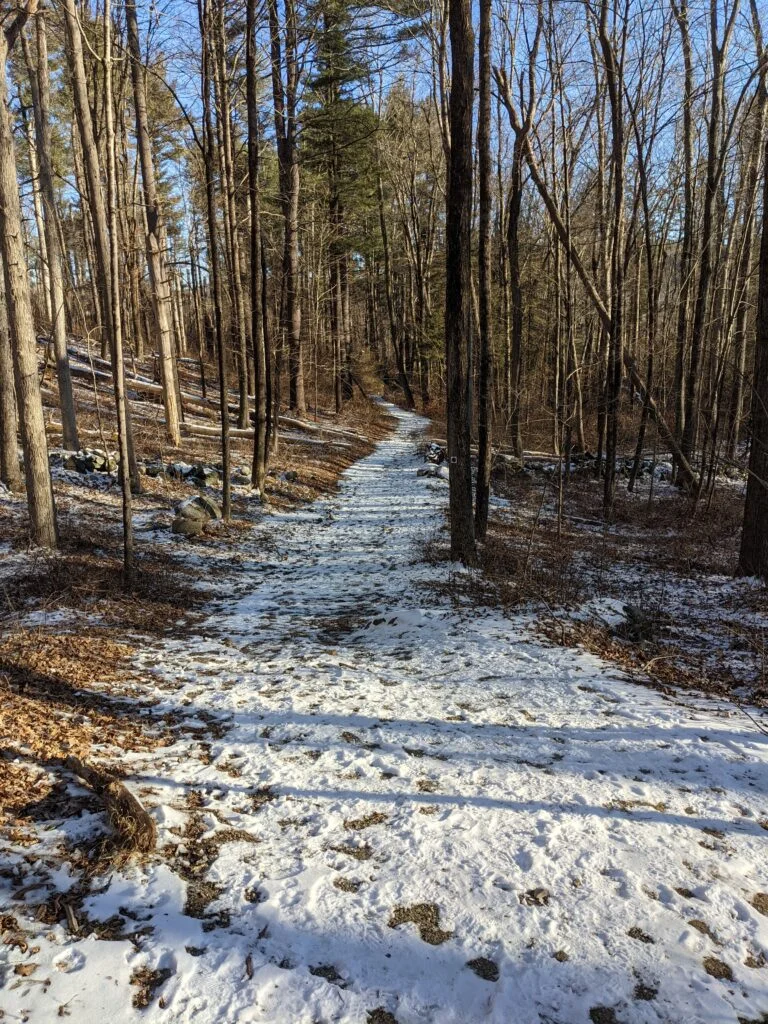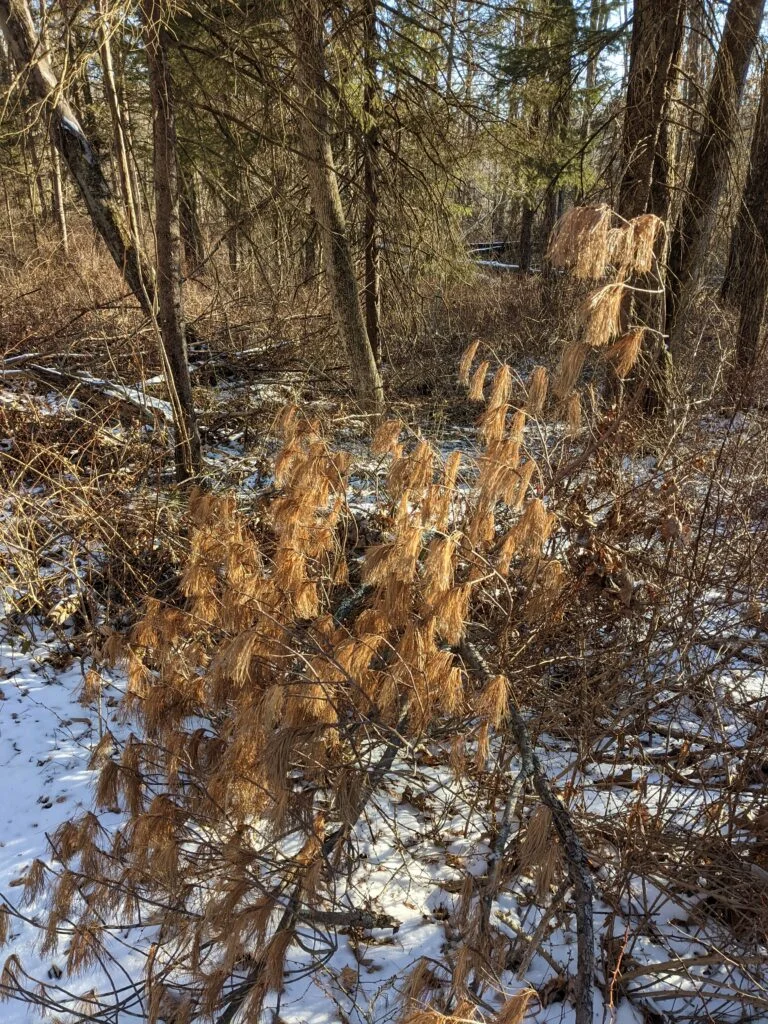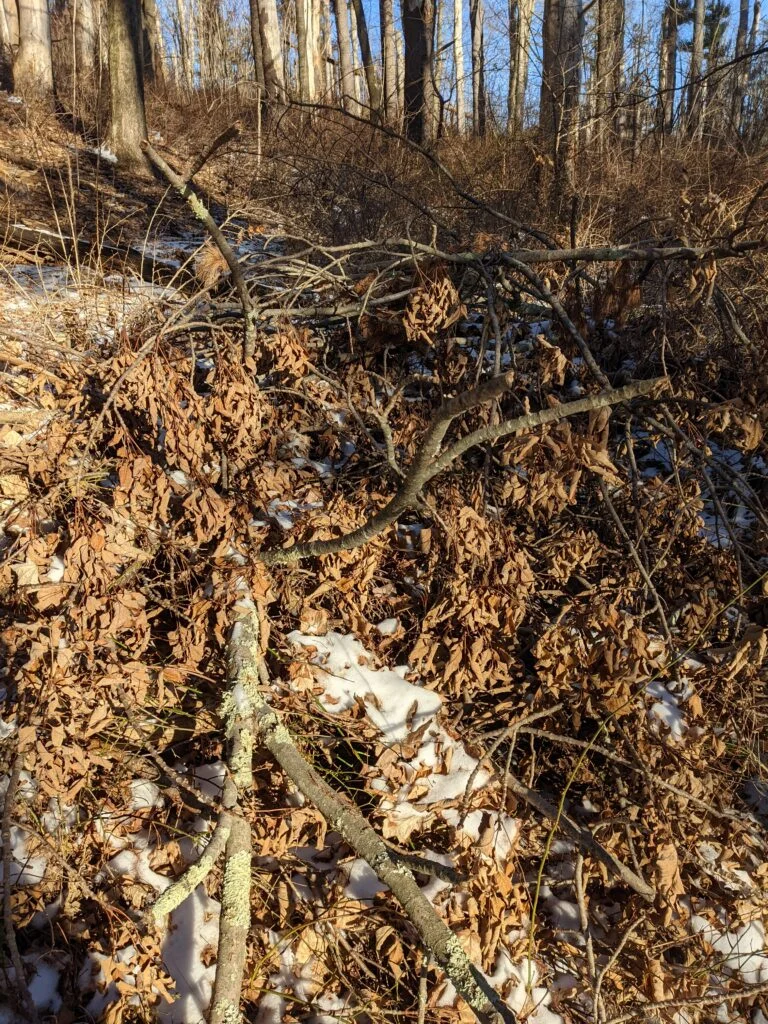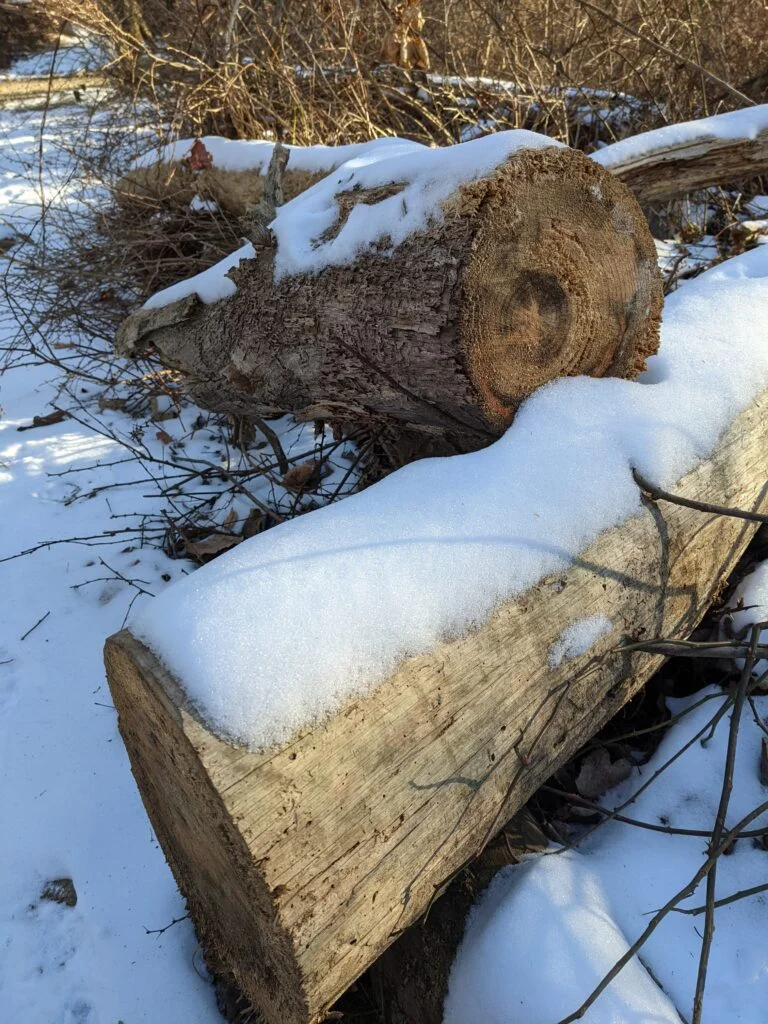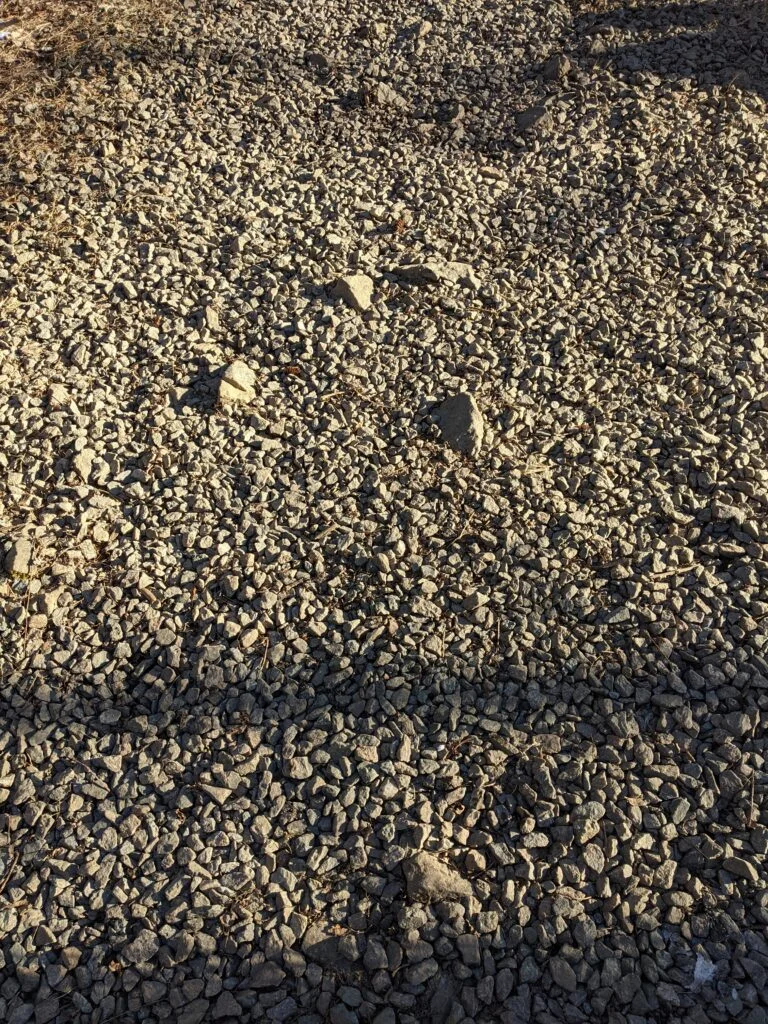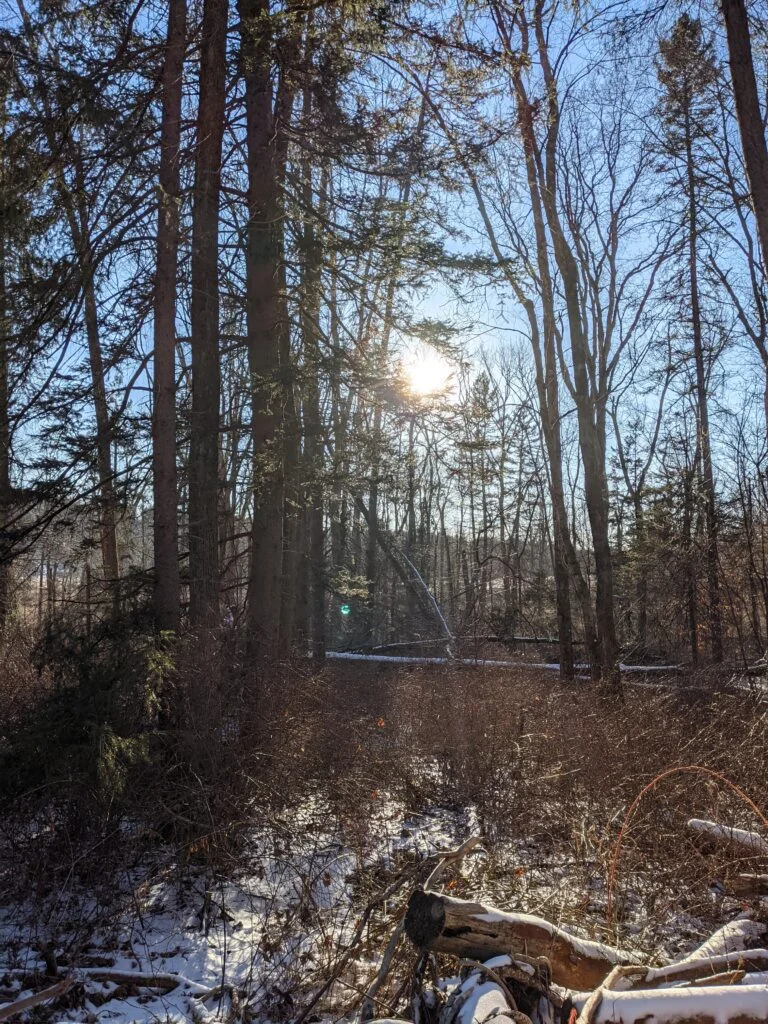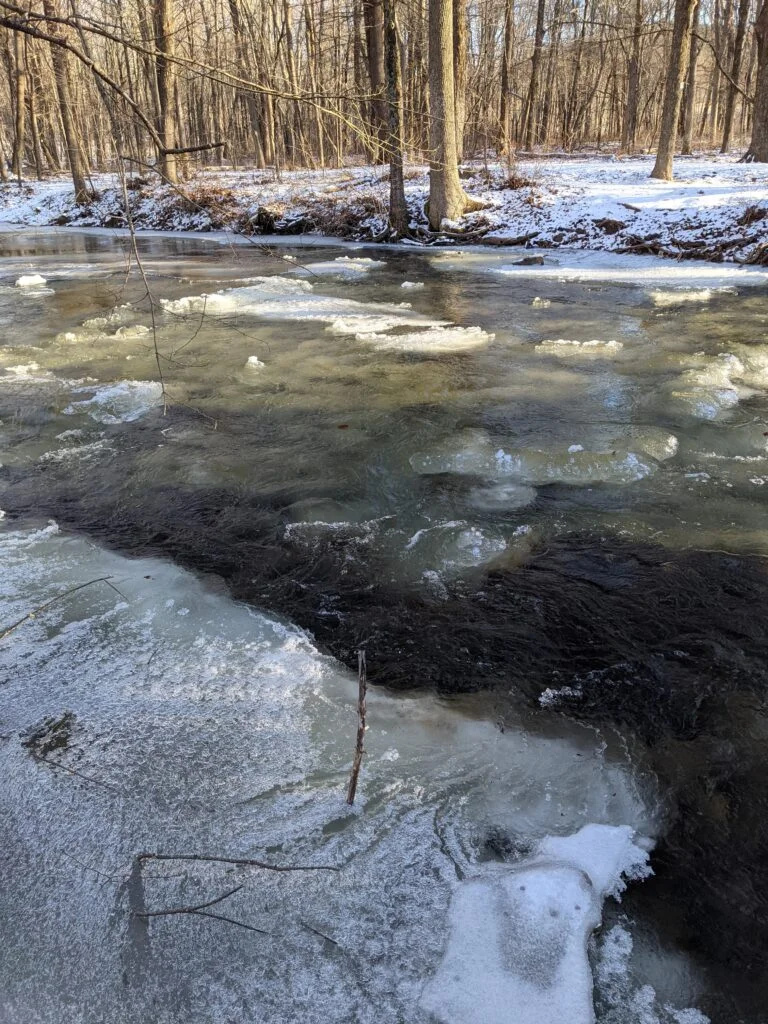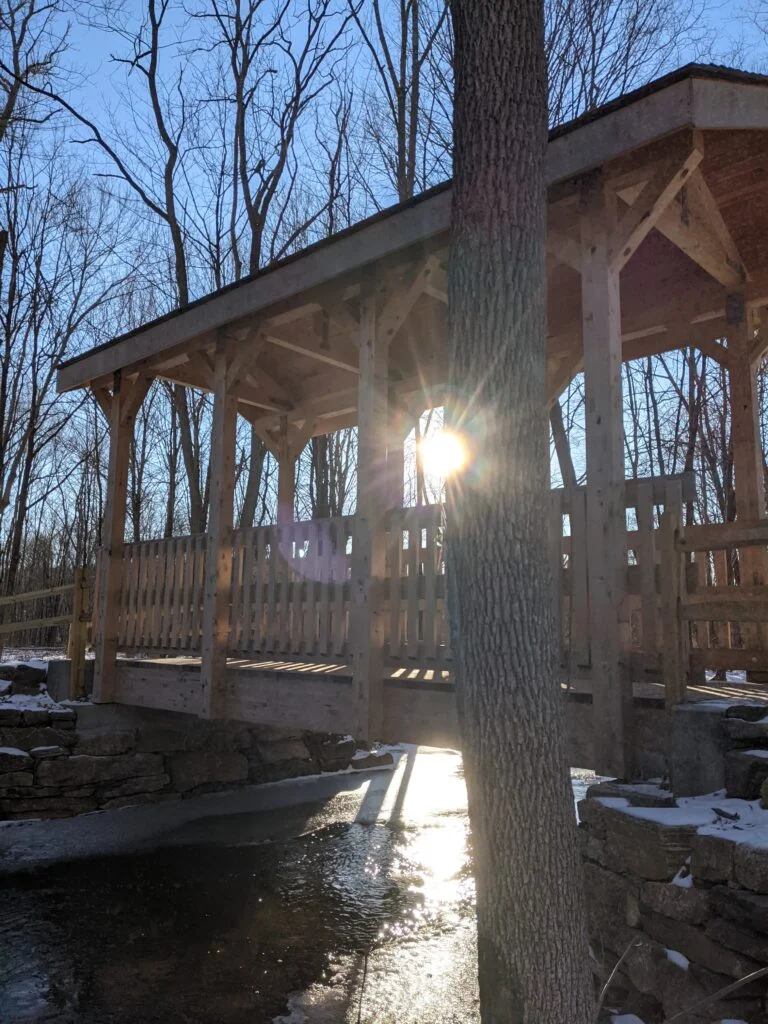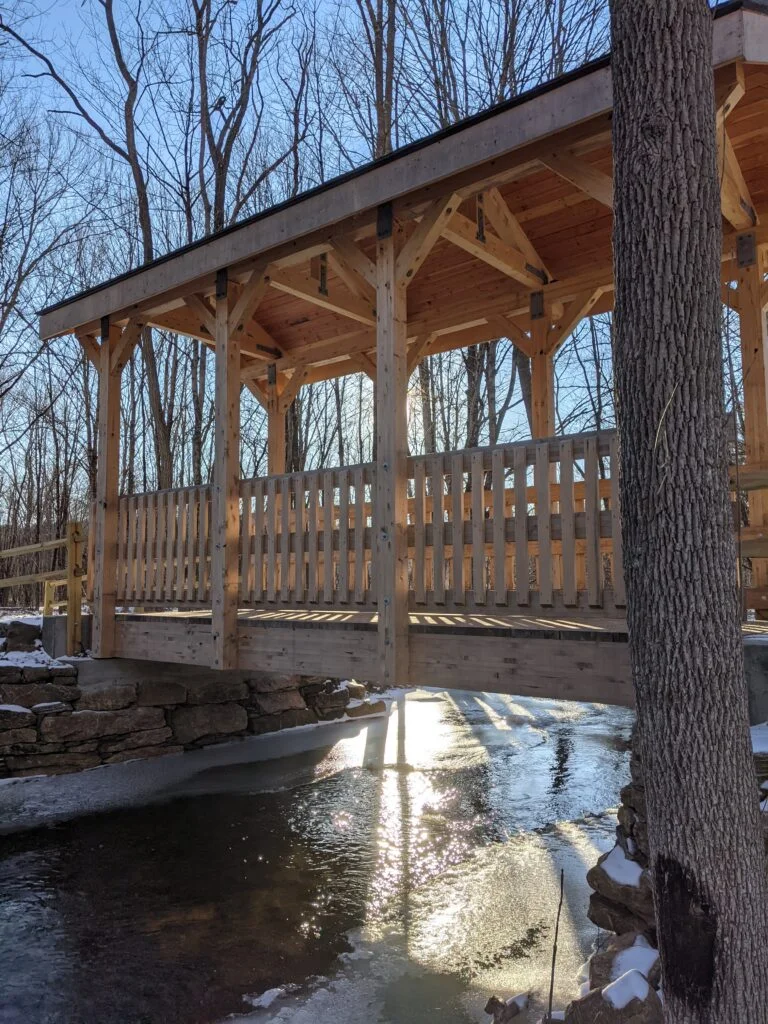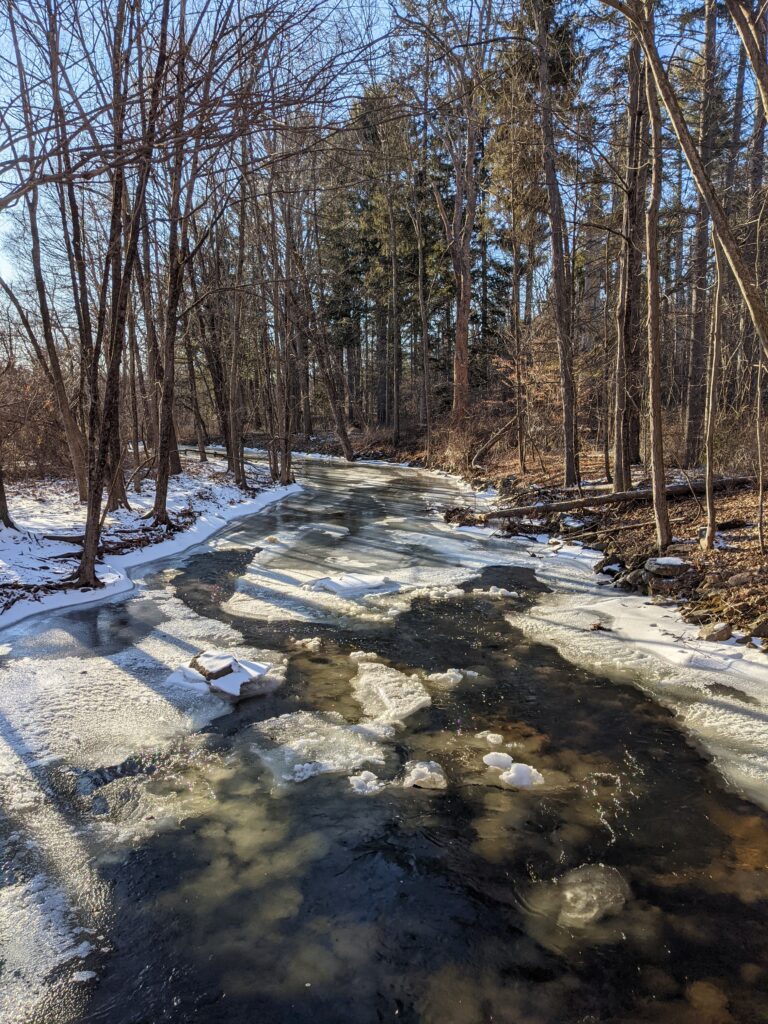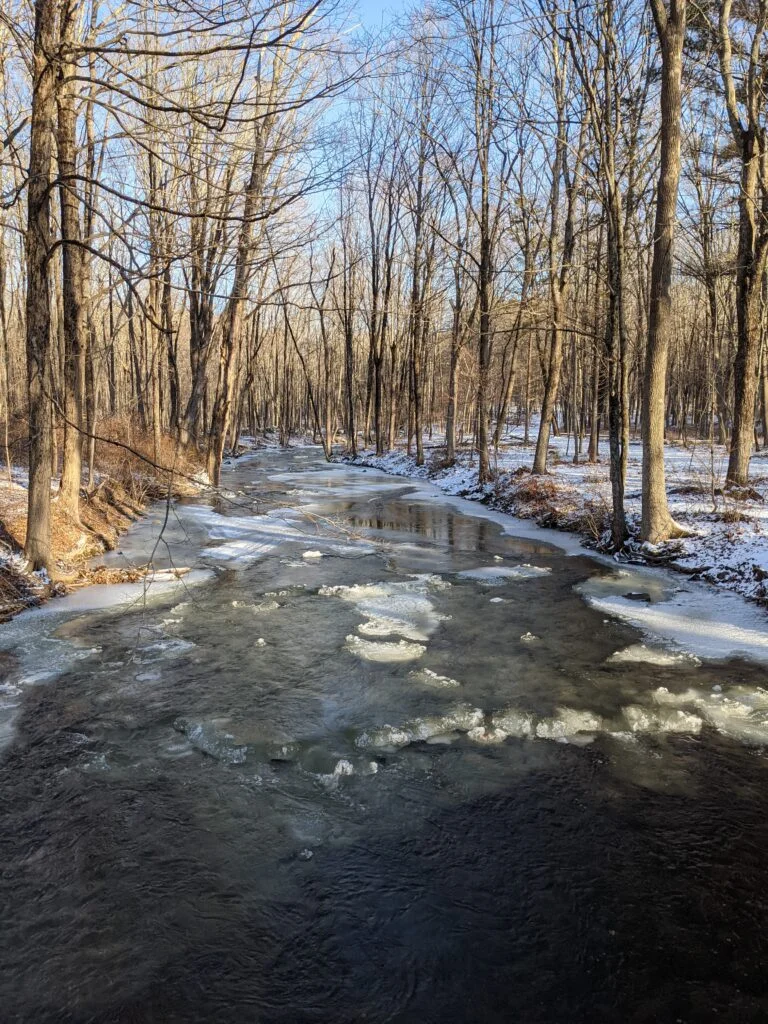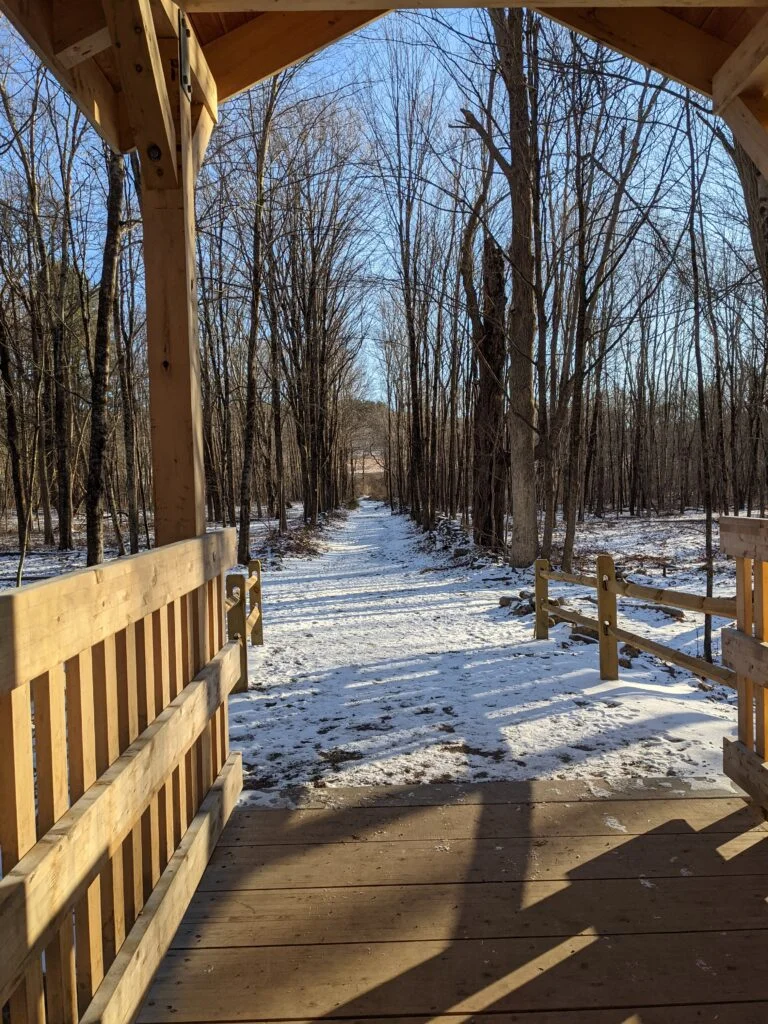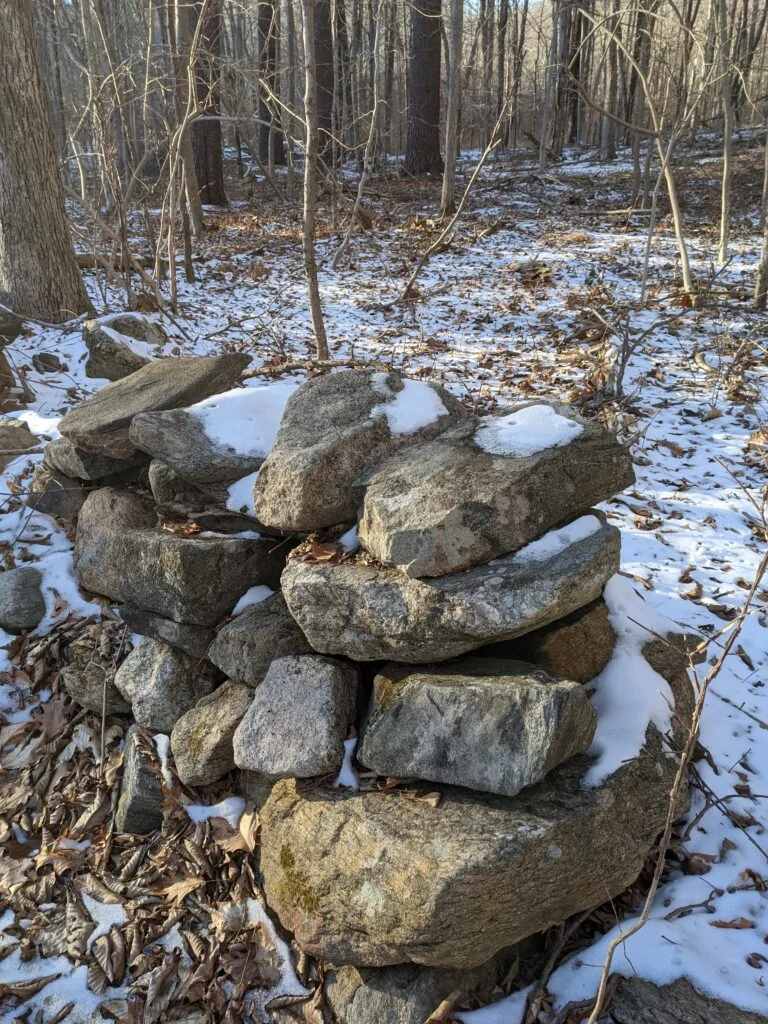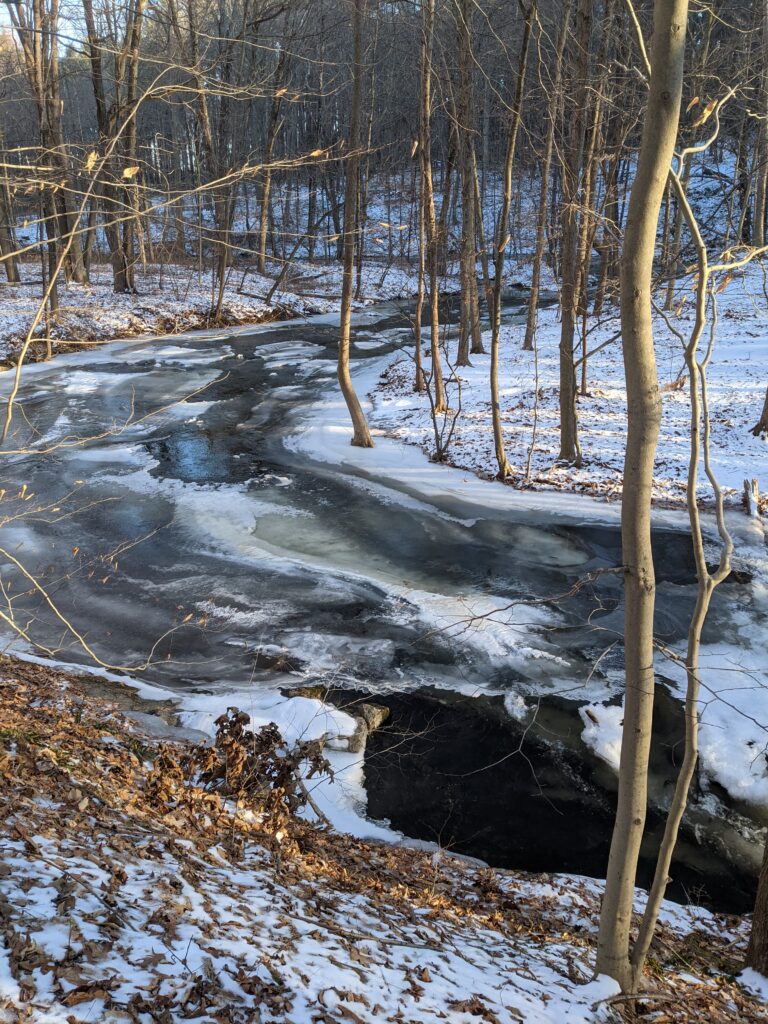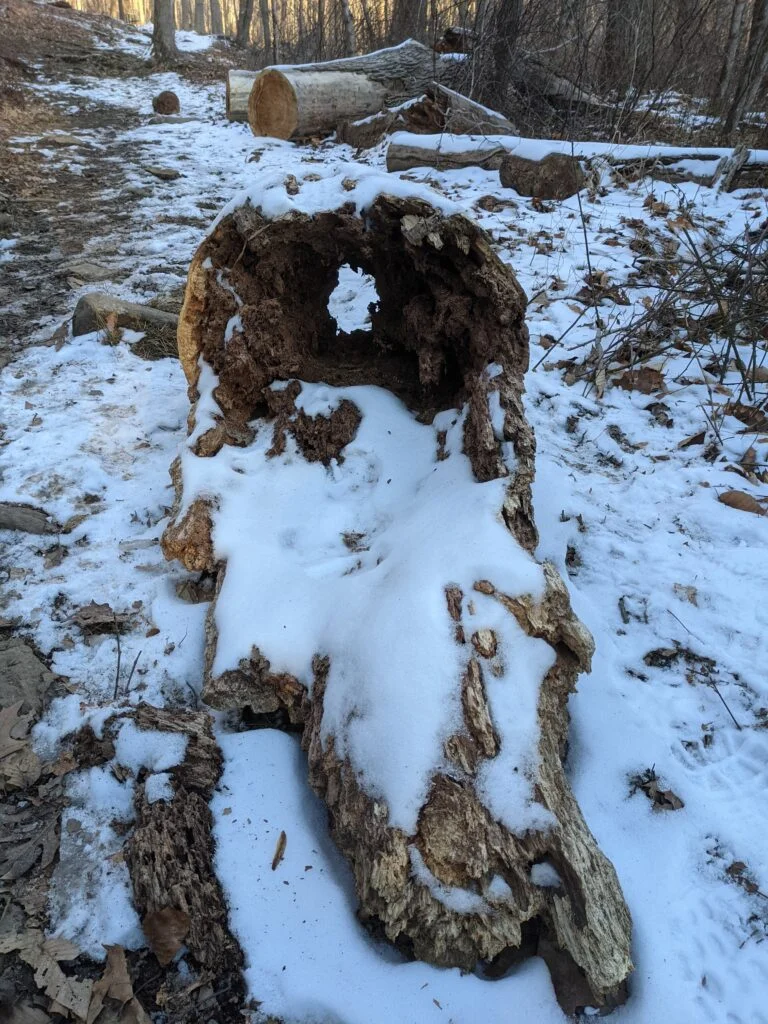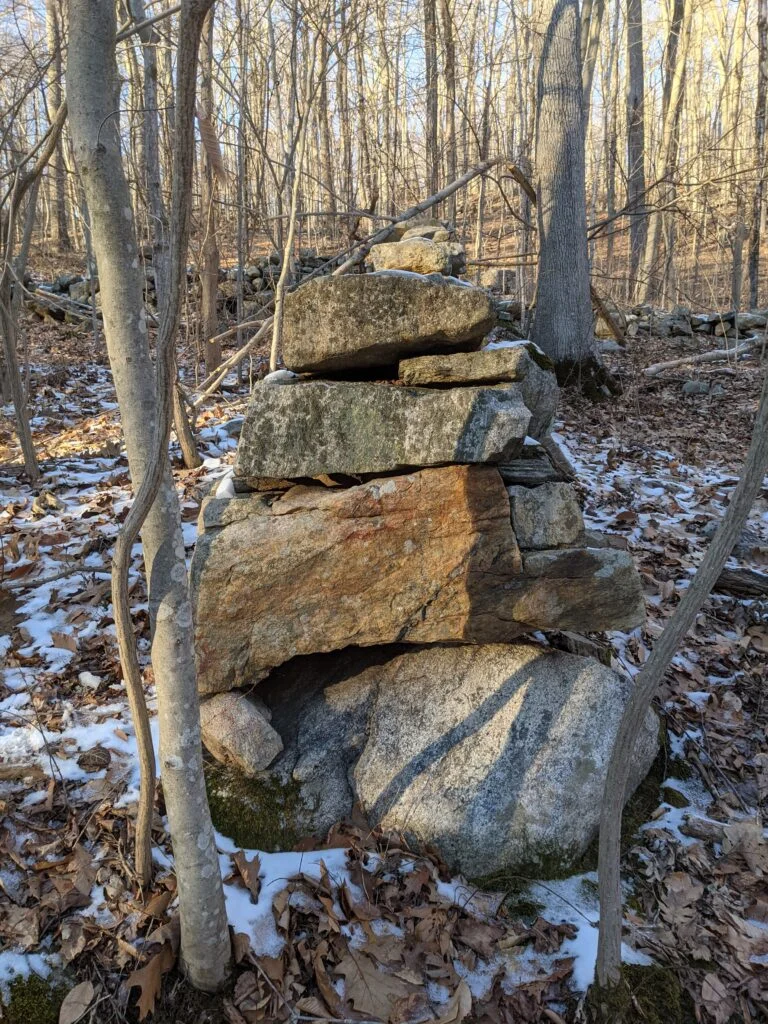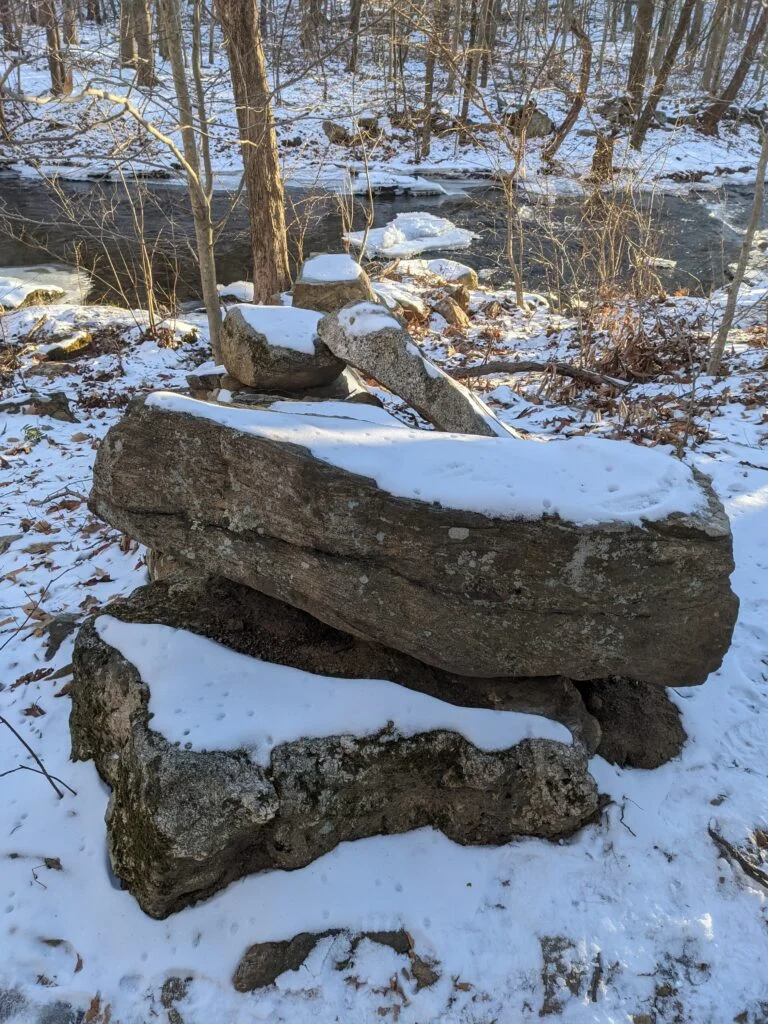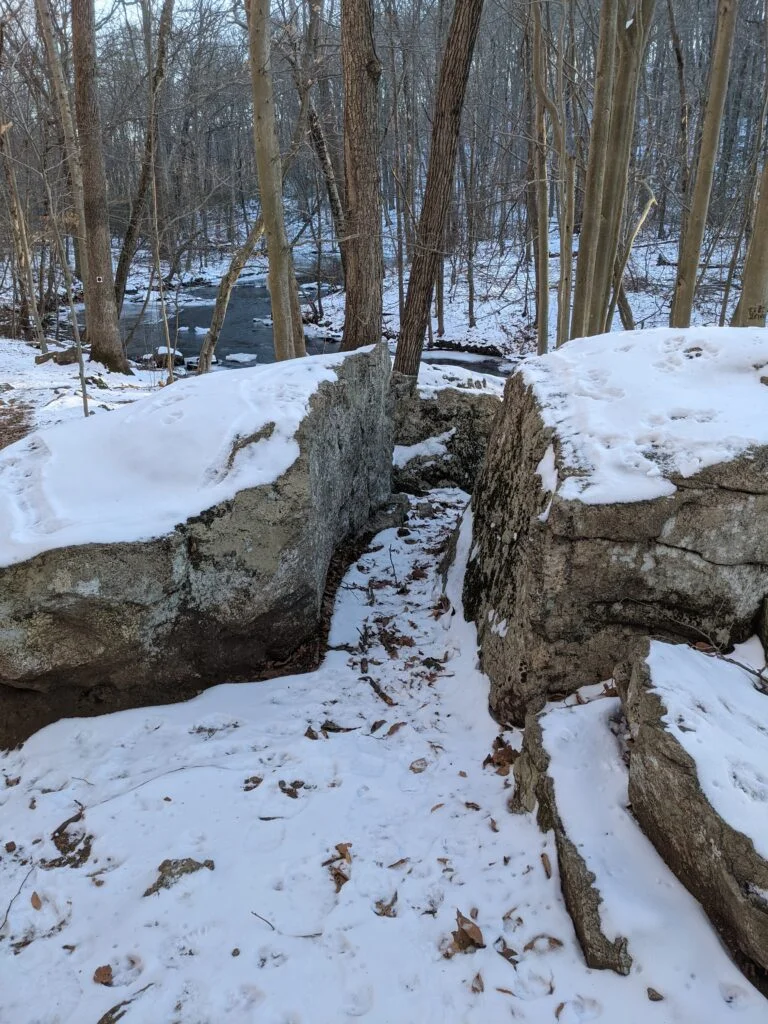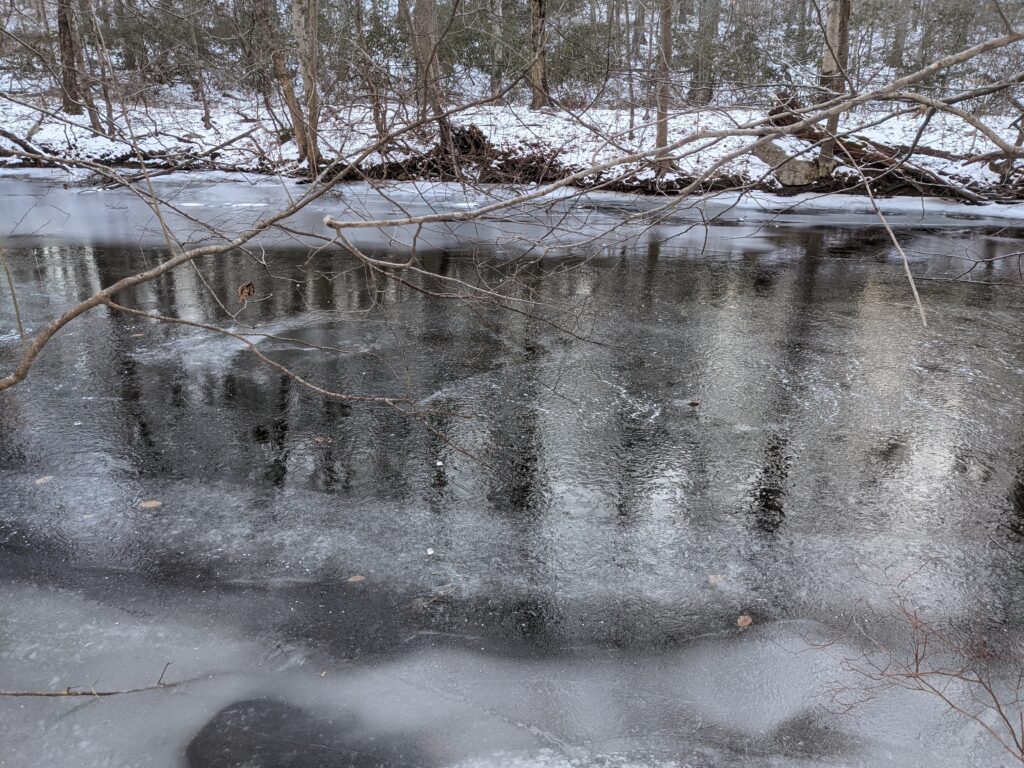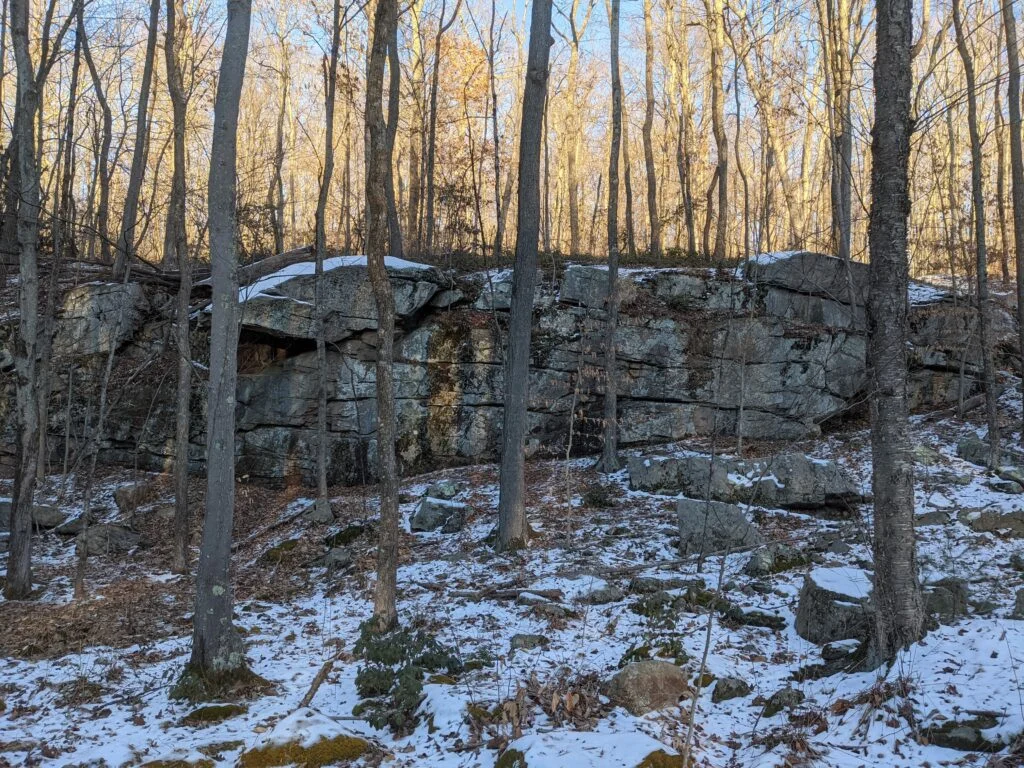Ward Pound Ridge Reservation - Deer Hollow, Cross River, Kimberly Bridge
January 30, 2021
Distance: 4 Mi
Duration: 01:42:45
Elevation Gain: 453 Ft
My third time exploring Ward Pound Ridge Reservation wasn't quite as long as my previous hikes here, but was still enjoyable nonetheless. Just as I started gradually in the summer with the distance and intensity of my hikes, I am following the same for the winter – starting out slow, learning to adjust to the climate and new gear.
The temperature of 28 degrees F was about the same as my previous winter hike; however, the "feels like" temperature was much lower, in the single digits. This trip I tried a new set of Merino Wool Thermal Pants ($) and a Merino Wool Midweight Long Sleeve Thermal Shirt ($). The Merino wool is very comfortable, fits nicely, and performed well through the hike. Taking off the layers at home, I didn't notice any considerable moisture or sweat build up. For this trip, I replaced my tattered winter hat with a Windproof Fleece Earflap Hat with Visor ($). The visor helped block the sun's low angles and the hat kept my head warm throughout the hike. My ears did feel a little cold towards the end. Next time I'll adjust the Buff Gaiter ($) to cover more of my ears.
After entering the park, I took Reservation Road east to the parking area near the Kimberly Bridge. A local Boy Scout troop had setup camp next to the parking lot. It brought back memories of my own Boy Scout camping experiences, although I'm pretty sure we never went in the winter. I started my hike at the Deer Hollow trail (DH blazes) which hugged the partially-frozen Cross River. On my previous trip, I had problems with my sunglasses fogging up when I used the gaiter to cover my nose and mouth. Despite applying Optix 55 Anti Fog Treatment ($) the night before, the same thing happened again. The glasses got a little foggy, but also really wet. It almost seemed like it was the anti fog working against itself. I used two drops on each side of each lens and I think maybe that was too much. Next time, I'll try applying less to see if that helps. I ended up struggling with this for the first 20 minutes of the hiking, trying to find the right amount of gaiter coverage that wouldn't cause fogging. I ended up wearing it up to and just slightly under my nose. My nose was a bit cold by the end of the hike, but not unbearable.
At junction marker #3, I took the Brown trail (Br with brown, circle blazes) to the right, marked with a sign to junction marker #7. I continued north on Br all the way up to junction marker #6. At this point, I was getting a bit warm, so I removed the inner vest shell of my jacket and tied it around my waist. I think it's smart to continue carrying the vest on future hikes in case I need to bundle up in an emergency, but wearing it when I was active was getting me too warm. I ended up leaving the vest off the rest of the trip and stayed comfortable without it.
At junction #6, I continued west on Br, all the way to junction marker #5. From there, I continued following Br, as it looped around and met up with the Cross River again at junction marker #1. I've been to this intersection before. There's a nice wooden bridge over the river, which was partially frozen but still flowing very freely and steadily. After taking a few photos, I continued east on Br, with more views of the river for almost that whole segment of trail back to junction marker #3. From there, I followed DH south back to the parking lot where I started.
After some initial frustrations at the start of the hike, I made some adjustments to my gear and attire to get comfortable and the rest of the hike was enjoyable. I'm still getting used to using my Black Diamond Alpine Carbon Cork Trekking Poles ($). I've got a good rhythm with them now and am ready to try them on steeper terrain. Overall, I think I've become more acclimated to winter hiking and am ready to tackle some longer, more challenging winter hikes in the coming weeks!
